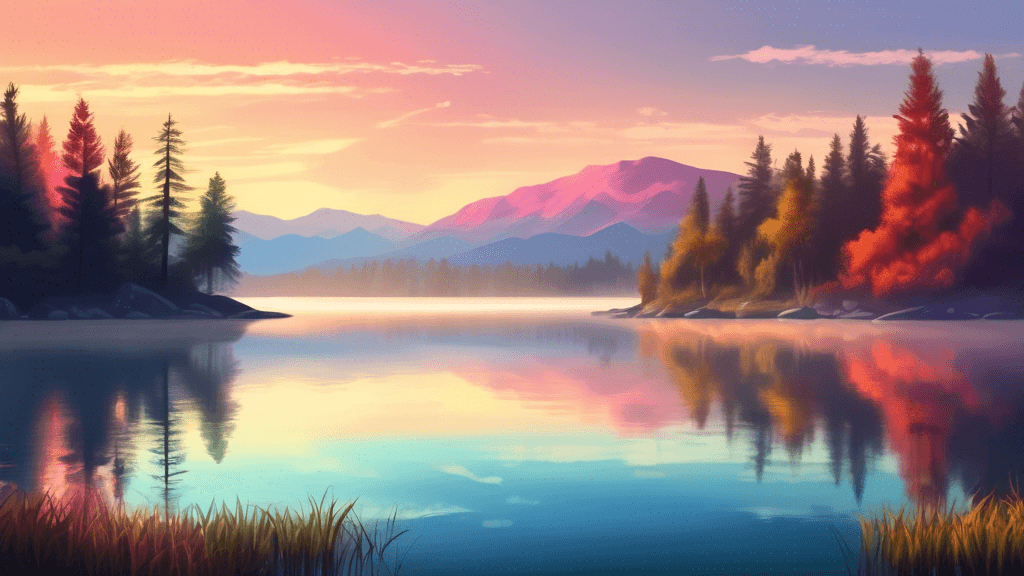
Capturing Serenity: Using Lakes and Ponds as Mirrors in Landscape Photography
Share
The Art of Reflection: Using Lakes and Ponds in Landscape Photography
Lakes and ponds do more than add a serene blue to the canvas of our photographs; they hold the power to transform a landscape through reflection, creating a symmetrical balance that can profoundly impact an image's composition and mood. But how does a photographer effectively harness this natural mirror? This blog delves deep into the techniques, considerations, and creative approaches needed to capture lakes and ponds in landscape photography.
Understanding the Basics of Reflection Photography
Reflection photography using water bodies involves capturing the reflection of elements such as the sky, trees, mountains, or even man-made structures in the quiet stillness of a lake or pond. The result? A mesmerizing mirror image that can double the visual impact of the scene.
However, simply finding a body of water and snapping a photo won't guarantee a stunning outcome. Several factors come into play:
- Weather Conditions: Clear, still days typically offer the best conditions for mirror-like reflections. Wind can disturb the water’s surface, and heavy cloud cover may obscure the intensity of the reflections.
- Time of Day: Early morning or late afternoon, known as 'golden hours', often provides softer light and generally calmer conditions.
- Position and Angle: The angle of the sun and your position relative to it can dramatically affect the appearance and intensity of the reflection.
Advanced Techniques and Considerations
While the basics will get you started, advancing your skills in reflection photography can transform good photos into great ones. Here are some refined strategies and aspects to consider:
- Using Polarizing Filters: A polarizing filter can be invaluable in managing the reflections visible in your photographs. Depending on the angle and rotation of the filter, you can either enhance the reflections or make the water more transparent, revealing what lies beneath.
- Experimenting with Exposure: Balancing the light between the sky and its reflection is crucial. Sometimes, using graduated ND filters or bracketing exposures for HDR processing is necessary to manage high contrast scenarios.
- Composition Rules: Incorporating compositional rules like symmetry, leading lines, or the rule of thirds with reflections can lead to a more visually appealing and balanced image.
Challenges and How to Overcome Them
No photographic journey is without its bumps, and shooting reflections is no exception. One of the primary challenges is dealing with unpredictable weather and water conditions. Flexibility is key—be ready to revisit your location multiple times to catch it at its best. Also, patience plays a significant role. Waiting for the wind to calm or for ripples to subside can be the difference between a good photo and a great one.
A common pitfall in capturing reflections is overcomplicating the scene. It's tempting to include every beautiful element, but sometimes, less is more. Focused, simple compositions often tell a clearer and more compelling story.
Moreover, in the age of digital editing, it's important to retain authenticity in your images. Over-processed photos can lose the natural beauty that drew you to the scene in the first place. Striking a balance in post-processing that enhances rather than detracts from the natural appeal is essential.
Inspirational Insights from the Experts
Each photographic pursuit agrees to a unique expression through the lens. Renowned nature photographer Ansel Adams, who was celebrated for his black and white landscapes, once said, A good photograph is knowing where to stand. This statement is profoundly true when it comes to reflection photography, where your position relative to the reflective surface can dramatically alter the image's impact.
Sarah Marino, a modern landscape photographer, emphasizes the importance of emotional connection to the scene, Photography for me is not just about capturing a beautiful scene; it's about conveying the emotion it evokes in me. When a lake mirrors a glorious sky, it's showing us twice the beauty – why not try to capture that feeling?
Conclusion: Your Next Steps in Reflection Photography
Mastering the artistry of using lakes and ponds as mirrors in your landscape photography is a journey of continual learning and passionate observation. Remember, every lake or pond you encounter has its unique personality and set of challenges. Embrace these as opportunities to refine your craft.
Why not grab your camera, step out into nature, and let the still waters reflect your artistic vision? Share your images and experiences; let's inspire each other in our quest to capture the still, mirrored beauty of our world's serene landscapes.





